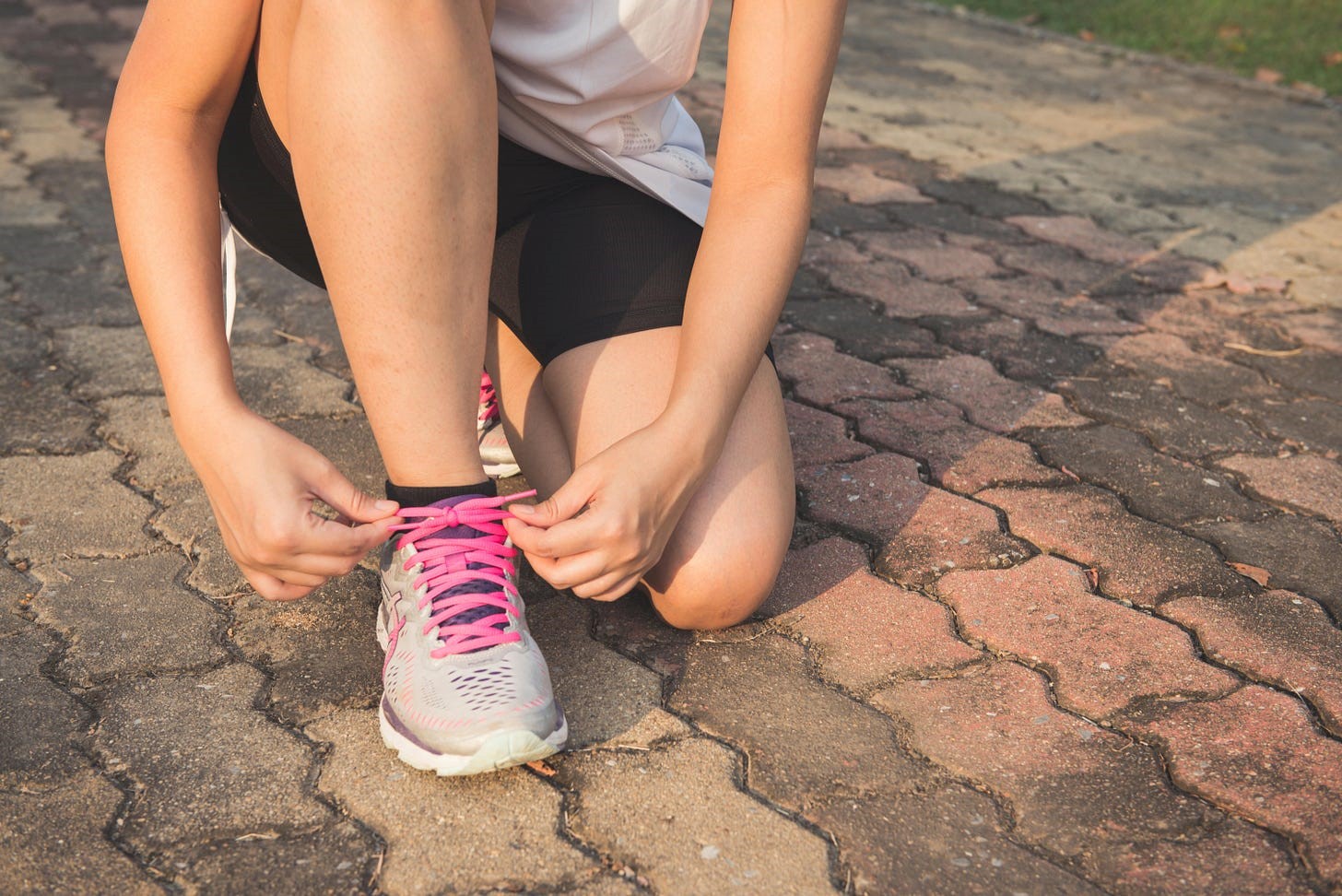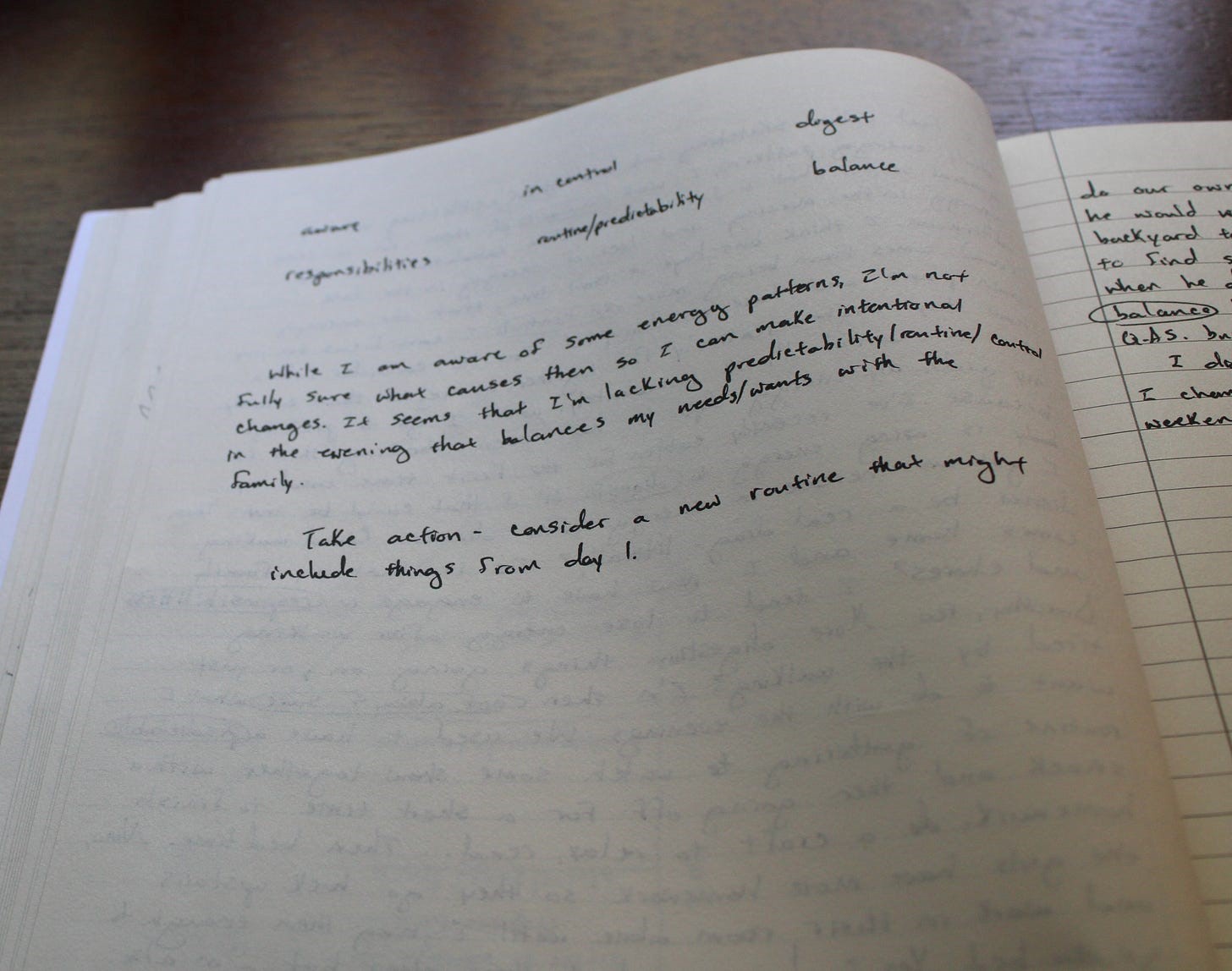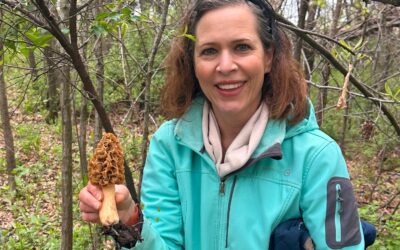
“Ah, that long jog after work was so refreshing and energizing!,” said no one. Except maybe me. It was me. In my early 40s, I started to jog and enroll in 5K runs. Initially, it was a way to get back into shape after three pregnancies, but I think the practice staved off burnout and stress. I didn’t know it then, but returning home and going for a jog for twenty or thirty minutes reduced what likely were massive levels of cortisol in my brain after stressful days as a school administrator. I learned that after one mile my energy increased, my mood recalibrated, and my self-esteem spiked. Somehow, I stumbled onto a way to alter my energy patterns.
I’d like to say I continue this practice today, but I’m in my early 50s and value the use of my knees. I take really long walks instead. My energy patterns have shifted due to daily life responsibilities, career changes, and midlife. It’s time to analyze where and when my energy dips, and discover creative ways to interrupt negative patterns. That’s where today’s prompt and process will help. Let’s begin…
This personal discovery led me to realize how many midlife women are struggling with similar energy challenges without understanding the underlying patterns. Midlife often brings significant shifts in our physical and emotional energy patterns; especially for women. Yet, many of us continue pushing against the natural rhythms of our body clock rather than working with it. What if you could tap into a well of energy? What would you do with untapped energy in your day?

Today’s prompt/focus is on mapping and honoring your individual energy flows. This is where the second step of my FACTOR model becomes crucial: Accept. Not in a resigned way, but in a ‘let’s get real about what’s actually happening’ way. You can’t change energy patterns you haven’t first acknowledged and mapped. You can find more details about the FACTOR model in a previous post found here.
Understanding when you naturally thrive and when you need rest or space supports your ability to make meaningful and intentional changes that could have a significant impact in the way you end your day, as well as how you feel about it. When you pay attention to your energy patterns over time, you build sustainable resilience rather than push through exhaustion. The goal here is lasting change, not a quick fix.
The Day 2 Prompt:
How do your natural energy patterns flow throughout the day? What patterns would you like to change? In what way would the change benefit you?
As I unpack my energy patterns throughout this post, you may see something that resonates with your own patterns. However, your energy patterns will likely be different and as unique as you are!
Common Energy Pattern Realities for Midlife Women
- The 95% Experience: Research shows that fatigue and exhaustion affects over 95% of women during the perimenopause and menopause stage of life.
- The Hormonal Orchestra: Fluctuating hormones (estrogen, progesterone, and testosterone being the biggest players) impact your energy patterns throughout your day and night.
- Mental Load: The invisible, behind-the-scenes thinking, planning, and organizing work required to manage a household and care for others. It frequently involves emotional work, such as managing the feelings and experiences of family members. Women in midlife carry a disproportionately heavy mental load, leading to exhaustion (on top of the exhaustion coming from physical changes during perimenopause and menopause). For more on this topic, check out A Better Share by Morgan Cutlip – see reference at the end.
- The Broken Sleep Cycle: Hormone changes in the body often lead to sleep interruptions. Night sweats, hot flashes, urges to use the bathroom, and general tendencies to wake up before the alarm clock (yes, even on the weekend!) can disturb your sleep patterns. In turn, less/poor sleep influences day energy patterns that are already affected. You see how this can continue to snowball…
If you haven’t read all or parts of The Menopause Brain by Lisa Mosconi, PhD, please check it out. I have listened to the audio book (twice!), purchased the physical copy, and have basically taken notes all over it. Dr. Mosconi’s work has helped me understand my perimenopause symptoms and how they actually connect to the other two “Ps” earlier in life: puberty and pregnancy. Even if you have never experienced pregnancy, the brain (during childbearing years) goes through changes similar to puberty and perimenopause. The Menopause Brain shares a chart on page 91 that compares changes in our brains and bodies within all three life stages. Some of the similar experiences named include; changes in body temperature, changes in mood, changes in sleep patterns, changes in memory and attention, and changes in brain energy.
Understanding the links between these three stages of life has increased my compassion and empathy for my teen daughters working through puberty, as well as myself as I experience perimenopause. In seeing my daughters’ struggle to master their changes in mood, sleep habits, energy patterns, and concentration/focus at school I see parallels with my own experience. I think it helps me treat myself with kindness, see my challenges/struggles through a perspective of grace, and gives me hope that what I am experiencing is temporary – as all stages of development have proven to be.
Significant points I noted for me:
- I had the most energy between 7:30 and 11 a.m.
- My lowest energy level hit around 4 p.m, but seemed to bounce back a bit after food and a walk.
- I was energized by new ideas, self-care practices, and (of course) coffee!
- My low energy patterns were felt when home with my family and engaging in household responsibilities. Not at all ideal as time with my children is becoming more and more scarce.
Photo Curation
Consider the prompt and what comes up for you. When you have some ideas or are ready to explore you can go about the process of curating one to three photos that connect the prompt, in a few ways.
- Take out your phone and snap some photos as ideas come to you. I often walk around my home or just take my phone out while walking, working, or out with the family in case something comes to mind.
- Scroll through your photos on your phone or other storage space where they live and select a few.
- If you have something specific in mind (i.e. golfing) but know that nothing in your home or around you would connect, you can search the internet for images. If you decide to take a screenshot, remember you are doing so for personal reasons and should only keep them in a folder on your computer, in a digital notebook, or on your phone to look at rather than sharing anywhere public. If you do decide to share the image publicly, consider the ethical implications of doing so. Asking the source for permission to share, citing the source, or linking directly to the space you found the image are good practices.
Wherever you store your images, look at them for a bit and, when ready, begin the next step of journaling.
Recognizing Your Personal Energy Rhythms (Journaling Exercise)
Respond to the prompt in a free thinking journal format. Use a familiar notebook, or scrap paper lying around. It will be important to write at least a page so you have enough insights to analyze in the final steps.
Prompt: How do your natural energy patterns flow throughout the day? What patterns would you like to change? In what way would the change benefit you?
Some quotes from my journal:
“What I felt the timeline validated was my energy in the morning and lack of energy in the late afternoon. I think, but hope it isn’t true, that the energy now comes from being more in control [in the mornings]. I can focus on my own plans ad have uninterrupted time to consider ideas, how they might creatively fit together, or reject them entirely.”
“I’m not always sure [in the evenings] what I want to do with the evenings. We used to have a predictable routine of gathering to watch some show together with a snack and then off for a short time to finish homework, do a craft to relax, read…then bedtime.”
“I have been thinking that my energy dips because I have just eaten for the first time (I do intermittent fasting) and the dip might be my body digesting?”

Journal Analysis
This is where all the pieces come together beautifully! Before engaging in the following simple practice, designate a place in your journal or find a post-it note to act as your “master chronicle.” This will help you keep the words/phrases that you select as most significant and at the end you try to connect them – almost as a detective.
Analysis Steps:
- Complete Read – Read your journal entry from start to finish without interruption (reading aloud is recommended, followed by an optional silent reading)
- Word Harvest – Scan through the entry and circle any words that feel significant or resonate with you (no limit on how many words you can circle in this step)
- Word Distillation – Review all your circled words and narrow them down to just 3-5 keywords/phrases that feel most meaningful
- Individual Entry Record – For each of your 3-5 key words, write down a brief sentence explaining why that particular word feels significant to you.
- Master Chronicle – Keep a simple list of all the keywords or phrases you curate from all three journal entries in this mini series of three. We’ll come back to this at the end.
Words from my Master Chronicle
- routine/predictability
- in control
- digest
- responsibilities
- balance
While I am aware of some energy patterns, I’m not fully sure what causes them so I can make intentional changes. It seems that I’m lacking predictability/routine/control in the evening. I feel I need a balance between what I need and what I want to do with the family to support a more balanced flow of energy. I think the earlier part of my day is when I experience a release of family “mental load” and, when it returns as everyone comes home, my energy used up with an onslaught of family responsibilities and household tasks.
Take Action – I will use some of my morning energy to prep meals (if only in the planning stage) to take some of the load off later in the day. I will also take time between school pick ups and dinner prep to read, sew, garden, or take a walk to help myself prepare for the load or provide thinking space to work through it.
Conclusion
Spend some time considering the words and phrases that came up for you after analyzing your journal. What next action step can you take to improve or change your energy patterns for the better? Ideas might include an earlier bedtime, increased time outdoors, a new routine for part of your day, etc.
Adapting to new energy patterns is part of midlife – whether by choice or in response to our bodies own changes and cycles. Repeat this prompt as many times as needed to help you gain clarity into what you need to maintain the energy you desire.
References:
Borgen, N. T., & Dafna Gelbgiser. (2023). The gendered division of cognitive household labor, mental load, and family–work conflict in European countries. European Societies, 26(3), 1–27. https://doi.org/10.1080/14616696.2023.2271963
Cutlip, M. (2025). A Better Share. Thomas Nelson.
Dean, L., Churchill, B., & Ruppanner, L. (2021). The Mental load: Building a Deeper Theoretical Understanding of How Cognitive and Emotional Labor Overload Women and Mothers. Community, Work & Family, 25(1), 1–17. https://doi.org/10.1080/13668803.2021.2002813
Mosconi, L. (2024). The Menopause Brain. Penguin.
Polo-Kantola, P. (2011). Sleep problems in midlife and beyond. Maturitas, 68(3), 224–232. https://doi.org/10.1016/j.maturitas.2010.12.009
Smith, C. (2025, April 8). Does Perimenopause Make You Tired? Does Perimenopause Make You Tired. https://thecoilclinic.co.uk/does-perimenopause-make-you-tired/



0 Comments